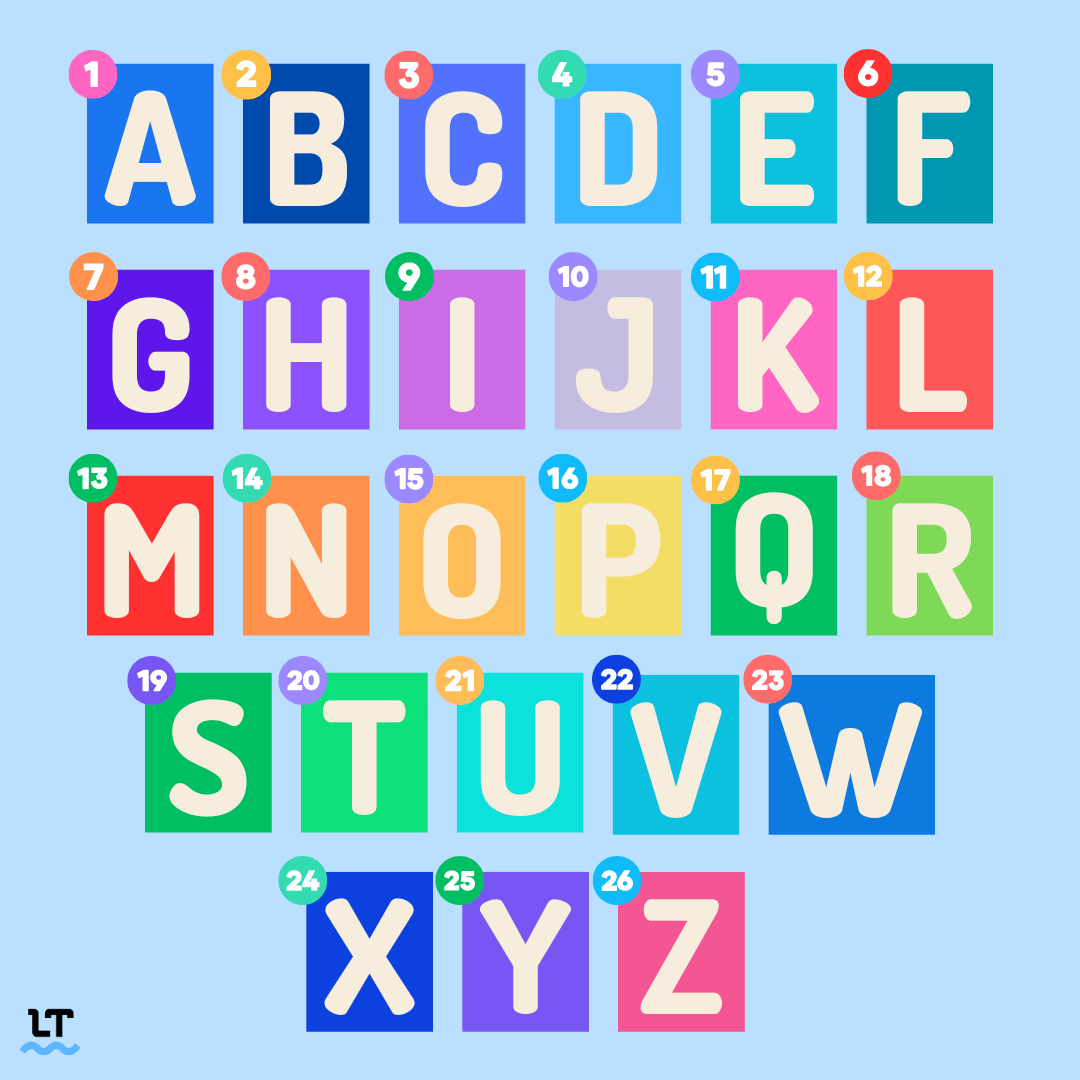The 26 Letters of the English Alphabet
The English alphabet is composed of 26 letters, which are:
Each letter has an uppercase form (above) and a lowercase form:
Development and history
Like many modern alphabets, the English alphabet can be traced back to the Phoenician (Semitic) alphabet, which consisted of 22 letters (all consonants) and was used in ancient Phoenicia. Eventually, the Greeks shortened the Semitic alphabet and designated certain symbols to represent vowel sounds. Later, the Romans developed their version of the Greek alphabet. It is generally believed that the Roman alphabet reached England by way of Ireland during the early period of Old English.
The English word alphabet (which has Latin origins), can be traced back to the first two letters of the Greek alphabet: “alpha” and “beta.”

- The quick brown fox jumps over the lazy dog.
But there are many others like:
- Pack my box with five dozen liquor jugs.
Vowels and Consonants in the English Alphabet
The English alphabet comprises vowels and consonants.
Consonants are letters that represent speech sounds that can only be made when the vocal tract is obstructed, either partially or entirely. Consonants require certain positions of the lips, tongue, and cheeks.
There are 21 consonants in the English language:
Vowels, on the other hand, are letters that represent sounds that are produced without any restriction of airflow through the mouth or throat. The English vowels are:
Keep in mind that the letters “w” and “y” can sometimes be consonants (water and lawyer), and sometimes vowels (wore and myth). These are known as semivowels.
Together, consonants and vowels create the complex system of sounds we use to communicate in English.
What Are Silent Letters?
Speaking of letters, do you know what silent letters are?
Silent letters are letters that don’t correspond with any sound when a particular word is spoken out loud. Think of the silent “B” in subtle, or the silent “P” in raspberry. These letters can be found in the beginning (gnome), middle (school), or end (column) of a word.
Some words contain a silent letter because they came from another language. Take the word psychology as an example, which has Greek origins. Because “ps-” doesn’t follow English phonological rules, the first letter was converted to a silent letter, but the spelling remained as is.
Almost every letter of the English alphabet (except “V”) is a silent letter in at least one word:
- A: bread
- B: thumb
- C: indict
- D: handsome
- E: imagine
- F: fifth (Keep in mind that some people pronounce the second “f.”)
- G: gnarl
- H: honor
- I: suit
- J: marijuana
- K: knife
- L: half
- M: mnemonic
- N: autumn
- O: people
- P: pneumonia
- Q: lacquer
- R: February
- S: island
- T: listen
- U: build
- W: write
- X: faux
- Y: beyond
- Z: rendezvous
Languages and Alphabets
Many modern languages use a variation of the Roman (or Latin) alphabet. Some of these languages have a few more letters (like the “Ñ” in the Spanish alphabet and the “ß” in German).
In fact, English borrows many words from other languages, which sometimes means incorporating their letters too, like the “-é” in fiancé. If you do decide to use these letters, remember to remain consistent throughout your writing.
Did you know that LanguageTool is a multilingual spelling assistant? That means it can check your writing for spelling and grammar errors in more than 30 languages. Give it a try!
